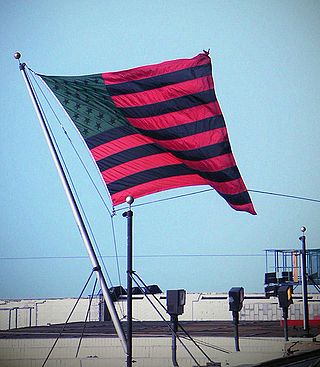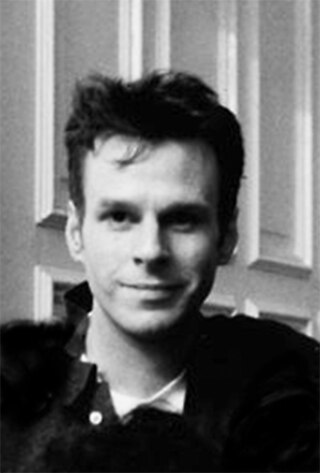Related Research Articles
Michael Max Asher was a conceptual artist, described by The New York Times as "among the patron saints of the Conceptual Art phylum known as Institutional Critique, an often esoteric dissection of the assumptions that govern how we perceive art." Rather than designing new art objects, Asher typically altered the existing environment, by repositioning or removing artworks, walls, facades, etc.
Barbara Kruger is an American conceptual artist and collagist associated with the Pictures Generation. She is most known for her collage style that consists of black-and-white photographs, overlaid with declarative captions, stated in white-on-red Futura Bold Oblique or Helvetica Ultra Condensed text. The phrases in her works often include pronouns such as "you", "your", "I", "we", and "they", addressing cultural constructions of power, identity, consumerism, and sexuality. Kruger's artistic mediums include photography, sculpture, graphic design, architecture, as well as video and audio installations.
Alison Saar is a Los Angeles, California based sculptor, mixed-media, and installation artist. Her artwork focuses on the African diaspora and black female identity and is influenced by African, Caribbean, and Latin American folk art and spirituality. Saar is well known for "transforming found objects to reflect themes of cultural and social identity, history, and religion."
Joe Goode is an American artist who attended the Chouinard Art Institute in Los Angeles from 1959–1961. Born in Oklahoma City, Oklahoma, Goode made a name for himself in Los Angeles through his cloud imagery and milk bottle paintings which were associated with the Pop Art movement. The artist is also closely associated with Light and Space, a West coast movement of the early 1960s. He currently creates and resides in Los Angeles, California.

David Hammons is an American artist, best known for his works in and around New York City and Los Angeles during the 1970s and 1980s.

Kenneth Price was an American artist who predominantly created ceramic sculpture. He studied at the Chouinard Art Institute and Otis Art Institute in Los Angeles, before receiving his BFA degree from the University of Southern California in 1956. He continued his studies at Chouinard Art Institute in 1957 and received an MFA degree from New York State College of Ceramics at Alfred University in 1959. Kenneth Price studied ceramics with Peter Voulkos at Otis and was awarded a Tamarind Fellowship.
Robert Hugh Cumming was an American painter, sculptor, photographer, and printmaker best known for his photographs of conceptual drawings and constructions, which layer meanings within meanings, and reference both science and art history.

Liza Ryan is an American contemporary artist living in Los Angeles, CA. Her work is held in the collections of the J. Paul Getty Museum, Los Angeles County Museum of Art among others.
Charles Ray is a Los Angeles–based American sculptor. He is known for his strange and enigmatic sculptures that draw the viewer's perceptual judgments into question in jarring and unexpected ways. Christopher Knight in the Los Angeles Times wrote that Ray's "career as an artist…is easily among the most important of the last twenty years."
Ed Moses was an American artist based in Los Angeles and a central figure of postwar West Coast art.

Stanya Kahn is an American artist. She graduated magna cum laude from San Francisco State University and received an MFA in 2003 from the Milton Avery Graduate School of the Arts at Bard College. Kahn lives and works in Los Angeles, California.
Ellen Brooks is an American photographer. She began her career on the West Coast, and is associated with the Los Angeles–based art community of the late 1960s and '70s. In 1982 she moved to New York, where her practice has since been based. Her work is known for its boundary-pushing forays into sculpture, and for her use of screens and image altering pro-filmic photographic processes. She has shown at the Museum of Modern Art (MOMA), the Whitney Museum of American Art, the Los Angeles Museum of Contemporary Art, and the Centre Pompidou, and has worked in the permanent collections of the MOMA, the Whitney, the National Museum of American Art, the Getty Museum, and others.
Glenn Akira Kaino is an American conceptual artist based in Los Angeles.
Tom Holland is an American visual artist. Holland is known for creating a style of art that may use fiberglass, aluminum, epoxy paint, plywood, beads, oil paint, palette knives, marble, copper, paper, and clay. For clay he uses watercolor, acrylic urethane, and ceramic glazes.
Jennifer Pastor is an American sculptor and Professor of Visual Arts at the University of California Irvine. Pastor examines issues of space encompassing structure, body and object orientations, imaginary forms, narrative and progressions of sequence.

Henry Taylor is an American artist and painter who lives and works in Los Angeles, California. He is best known for his acrylic paintings, mixed media sculptures, and installations.
Anthony Hernandez is an American photographer who divides his time between Los Angeles, his birthplace, and Idaho. His photography has ranged from street photography to images of the built environment and other remains of civilization, particularly those discarded or abandoned elements that serve as evidence of human presence. He has spent most of his career photographing in Los Angeles and environs. "It is L.A.'s combination of beauty and brutality that has always intrigued Hernandez." La Biennale di Venezia said of Hernandez, "For the past three decades a prevalent question has troubled the photographer: how to picture the contemporary ruins of the city and the harsh impact of urban life on its less advantaged citizens?" His wife is the novelist Judith Freeman.
Sue Williams is an American artist born in 1954. She came to prominence in the early 1980s, with works that echoed and argued with the dominant postmodern feminist aesthetic of the time. In the years since, her focus has never waned yet her aesthetic interests have moved toward abstraction along with her subject matter and memories. She lives and works in New York.

Glen Seator (1956-2002) was an American visual artist and conceptual sculptor. He lived in Brooklyn, NY and San Miguel de Allende, Mexico.

Michael Leslie Brewster was an American artist, recognized for coining the term “acoustic sculpture.” He worked with sound to create sonic environments beginning in the 1970s until 2016. His works were shown across the United States and Europe, and are in permanent collections, notably the Solomon Guggenheim Museum, the Fondo per Arte Italiano, Museum of Contemporary Art Los Angeles, and the Giuseppe Panza Collection.
References
- ↑ "Tim Hawkinson — Art21".
- ↑ John Ackerman (2000). Unnatural Science: An Exhibition, Spring 2000 - Spring 2001, MASS MoCA. MASS MoCA Publications. ISBN 978-0-9700738-1-5.
- ↑ Emerling, Susan (3 March 2007). "Artist Tim Hawkinson floats an idea at Getty" – via LA Times.
- ↑ Kennedy, Randy (5 March 2007). "Tim Hawkinson - Getty Museum -Art". The New York Times.
- ↑ Kimmelman, Michael (11 February 2005). "Wonderment and Wackiness, With Gravitas". The New York Times.
- ↑ SNOW, SHAUNA (22 July 1990). "FACES : Tim Hawkinson--Manipulating Everyday Objects and Notions" – via LA Times.
- ↑ https://hirshhorn.si.edu/wp-content/uploads/2012/06/Tim-Hawkinson-Brochure-Directions.pdf [ bare URL PDF ]
- ↑ Dailey, Meghan (May 2000). "Tim Hawkinson at The Power Plant". Artforum. 38 (9). Retrieved 2020-09-25.
- ↑ "Tim Hawkinson". whitney.org. Retrieved 2020-09-25.
- ↑ O'Sullivan, Michael (December 27, 2002). "The Corcoran Biennial: Dramatic License". The Washington Post .
- ↑ "Artland - Art by Tim Hawkinson". www.artland.com. Retrieved 2021-04-05.
- ↑ "'I Don't Want That Crap in My Gallery' | Commonweal Magazine". www.commonwealmagazine.org. Retrieved 2020-01-13.
- Lawrence Rinder. 2005, Tim Hawkinson (Whitney Museum of American Art)